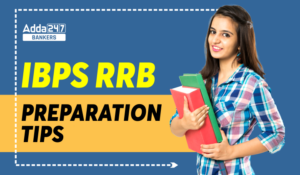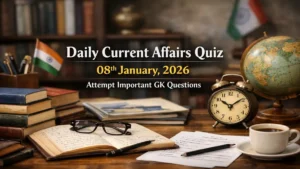Dear Aspirants,
Reasoning Questions for SBI PO prelims 2019:
Reasoning Ability is an onerous section. With the increasing complexity of questions, it becomes hard for one to give it the cold shoulder. The only way to make the grade in this particular section in the forthcoming banking exams. And, to let you practice with the best of the latest pattern questions, here is the Adda247 Reasoning Quiz based on the exact same pattern of questions that are being asked in the exams.
irections (1-5): Study the following information carefully to answer the given questions.
A word and number arrangement machine when given an input line of words and numbers rearranges them following a particular rule in each step. The following is an illustration of input and rearrangement.
Input: Helmet 32 Hunter 19 uncle 77 idiot 64
Step I: idiot Helmet 32 Hunter 19 uncle 77 64
Step II: uncle idiot Helmet 32 Hunter 19 64 77
Step III: Hunter uncle idiot Helmet 19 64 77 32
Step IV: Helmet Hunter uncle idiot 64 77 32 19
As per the rules followed in the steps given above, find out in each of the following questions the appropriate step for the given input.
Input: 29 ference 19 32 Dilip 78 chocolate war
Q1. What will be addition of 3rd element from left and 2nd element from right in step II?
89
86
98
97
None of these
Solution:
In each step both number and word are arranged.
The machine rearranges the words and numbers in such a way that the words are arranged in descending order based on the number of vowels in the given word. If two words contain the same number of vowels, then they are arranged in reverse alphabetical order from left in each step.
Numbers are arranged in decreasing order from right end. Even numbers are arranged in odd steps and odd numbers are arranged in even steps.
Input: 29 ference 19 32 Dilip 78 chocolate war
Step I: chocolate 29 ference 19 32 Dilip war 78
Step II: ference chocolate 19 32 Dilip war 78 29
Step III: Dilip ference chocolate 19 war 78 29 32
Step IV: war Dilip ference chocolate 78 29 32 19
Q2. What will be the position of ‘ference’ in the last step?
Third from the left
Sixth from the right
Sixth from the left
Fifth from the left
Both (a) and (b)
Solution:
In each step both number and word are arranged.
The machine rearranges the words and numbers in such a way that the words are arranged in descending order based on the number of vowels in the given word. If two words contain the same number of vowels, then they are arranged in reverse alphabetical order from left in each step.
Numbers are arranged in decreasing order from right end. Even numbers are arranged in odd steps and odd numbers are arranged in even steps.
Input: 29 ference 19 32 Dilip 78 chocolate war
Step I: chocolate 29 ference 19 32 Dilip war 78
Step II: ference chocolate 19 32 Dilip war 78 29
Step III: Dilip ference chocolate 19 war 78 29 32
Step IV: war Dilip ference chocolate 78 29 32 19
Q3. Which of the following will be the penultimate step?
Step II
Step V
Step IV
Step III
None of these
Solution:
In each step both number and word are arranged.
The machine rearranges the words and numbers in such a way that the words are arranged in descending order based on the number of vowels in the given word. If two words contain the same number of vowels, then they are arranged in reverse alphabetical order from left in each step.
Numbers are arranged in decreasing order from right end. Even numbers are arranged in odd steps and odd numbers are arranged in even steps.
Input: 29 ference 19 32 Dilip 78 chocolate war
Step I: chocolate 29 ference 19 32 Dilip war 78
Step II: ference chocolate 19 32 Dilip war 78 29
Step III: Dilip ference chocolate 19 war 78 29 32
Step IV: war Dilip ference chocolate 78 29 32 19
Q4. After how many steps no further rearrangement of words is possible?
Three
Four
Six
Seven
None of these
Solution:
In each step both number and word are arranged.
The machine rearranges the words and numbers in such a way that the words are arranged in descending order based on the number of vowels in the given word. If two words contain the same number of vowels, then they are arranged in reverse alphabetical order from left in each step.
Numbers are arranged in decreasing order from right end. Even numbers are arranged in odd steps and odd numbers are arranged in even steps.
Input: 29 ference 19 32 Dilip 78 chocolate war
Step I: chocolate 29 ference 19 32 Dilip war 78
Step II: ference chocolate 19 32 Dilip war 78 29
Step III: Dilip ference chocolate 19 war 78 29 32
Step IV: war Dilip ference chocolate 78 29 32 19
Q5. Which step number will give following output? Dilip ference chocolate 19 war 78 29 32
Step II
Step III
Step IV
Step I
None of these
Solution:
In each step both number and word are arranged.
The machine rearranges the words and numbers in such a way that the words are arranged in descending order based on the number of vowels in the given word. If two words contain the same number of vowels, then they are arranged in reverse alphabetical order from left in each step.
Numbers are arranged in decreasing order from right end. Even numbers are arranged in odd steps and odd numbers are arranged in even steps.
Input: 29 ference 19 32 Dilip 78 chocolate war
Step I: chocolate 29 ference 19 32 Dilip war 78
Step II: ference chocolate 19 32 Dilip war 78 29
Step III: Dilip ference chocolate 19 war 78 29 32
Step IV: war Dilip ference chocolate 78 29 32 19
Directions (6-10): Study the following questions and answering the questions referring to the word sequence given below:
CAP MAT CBR RAT RED
Q6. If all the words are arranged according to the alphabetical series from right to left, then which word is third from the left end?
MAT
CAP
RAT
RED
None of these
Solution:
RED RAT MAT CBR CAP
Q7. If each letter in each of the word is arranged according to the alphabetical series, then which is the third letter of the word, which is fourth from the right end?
Y
E
A
T
None of these
Solution:
ACP AMT BCR ART DER
Q8. If each vowel of each word is changed to its next letter according to the alphabetical series, then How many meaningful word will be formed?
Two
One
More than three
Three
None
Solution:
CBP MBT CBR RBT RFD
Q9. If each consonant of each word is changed to its next letter according to the alphabetical series, then How many words contain more than one vowel?
Two
None
One
Three
None of these
Solution:
DAQ NAU DCS SAU SEE
Q10. If 1st and 3rd letter of each word are interchange, then what is the difference between the numerical value (rank) of 2nd letter of 2nd word and 3rd letter of the 5th word from the left end?
13
6
15
10
None of these
Solution:
PAC TAM RBC TAR DER
R – A = 18 – 1 = 17 Ans.
Directions (11-15): In these questions, relationship between different elements is shown in the statements. These statements are followed by two conclusions. Mark answer
Q11. Statements: B≤C=D,A>B, D≤E,C≥F=G
Conclusions: I.B≥G
II.E≥G
if only conclusion I is true.
if only conclusion II is true.
if either conclusion I or II is true.
if neither conclusion I nor II is true.
if both conclusion I and II are true.
Solution:
I.B≥G (false) II.E≥G (true)
Q12. Statements: H≥T, T>S≤Q,T≥U=V,
Conclusions: I.U≤H
II.S<H
if only conclusion I is true.
if only conclusion II is true.
if either conclusion I or II is true.
if neither conclusion I nor II is true.
if both conclusion I and II are true.
Solution:
I.U≤H (true) II.S<H (true)
Q13. Statements: A>B≥L, R>B=H
Conclusions: I.A<L
II. R>L
if only conclusion I is true.
if only conclusion II is true.
if either conclusion I or II is true.
if neither conclusion I nor II is true.
if both conclusion I and II are true.
Solution:
I.A<L (false) II. R>L (true)
Q14. Statements: P>K=L, P≤S<Q, T>K
Conclusions: I. Q>K
II. Q<T
if only conclusion I is true.
if only conclusion II is true.
if either conclusion I or II is true.
if neither conclusion I nor II is true.
if both conclusion I and II are true.
Solution:
I.Q>K (true) II.Q<T (false)
Q15. Statements: P<H, V≥S>H, N≥V
Conclusions: I.N≥P
II.S>P
if only conclusion I is true.
if only conclusion II is true.
if either conclusion I or II is true.
if neither conclusion I nor II is true.
if both conclusion I and II are true.
Solution:
I.N≥P (false) II.S>P (true)
You may also like to Read:





 IBPS RRB Preparation Tips, Check Strateg...
IBPS RRB Preparation Tips, Check Strateg...
 RBI Office Attendant Recruitment 2026 No...
RBI Office Attendant Recruitment 2026 No...
 Daily Current Affairs Quiz 08th January,...
Daily Current Affairs Quiz 08th January,...








